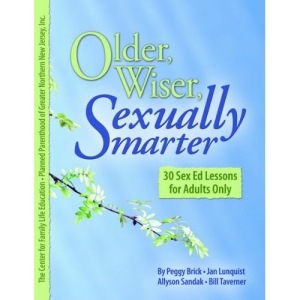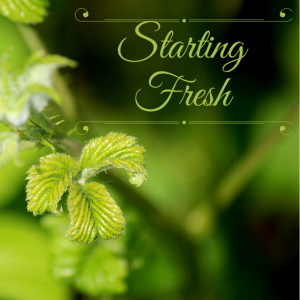 There are two lesson plans in Older, Wiser, Sexually Smarter that are called Get a Second Wind. The first is for women, the second for men, and the focus is sexuality at mid and later life. Today and tomorrow I’m going to highlight these two lessons.
There are two lesson plans in Older, Wiser, Sexually Smarter that are called Get a Second Wind. The first is for women, the second for men, and the focus is sexuality at mid and later life. Today and tomorrow I’m going to highlight these two lessons.
The assumption that older people slow down sexually is so common I would almost call it ubiquitous. Young people often begin our classes with negative judgments about older adults engaged in sexuality. When those young people grow into middle age, and then into older adulthood, it seems likely that they will retain those negative assumptions and apply them inwardly. Lessons like these help young people move past those ideas and into a more accepting and positive space of their own aging sexual connections.
GET A SECOND WIND:
Women & Sexuality at Mid & Later Life
OBJECTIVES
Participants will:
- Identify family, media, and societal messages about women at midlife.
- Examine key changes women experience with respect to sexuality through the lifespan.
- Review basic female anatomy, noting the impact of aging on physiological responses.
- Review the key facts regarding changes in female sexuality at midlife and beyond.
- Reflect on the current “truths” about women’s sexuality at midlife.
RATIONALE
The ramifications of a sex-saturated, but shame- and guilt-ridden culture may hit hardest at midlife. Changes in our bodies and relationships encourage us to reflect on ourselves as sexual persons and often, for the first time, consider the forces that have shaped our sexual selves. For many women, midlife brings a crisis as they fear loss of desirability and sexual pleasure. This lesson examines the basis of those fears and how the midlife sexual passage — with knowledge and resources — can be rich in pleasure and possibility.
My favorite thing about this lesson – hands down – is a graphic that shows life span from birth to age 90, broken into decade segments. It notes the time that the sexual response cycle is working (the entire life span) and the time that the reproductive system is working (from the early teen years until about 50. That leaves roughly half the life when the reproductive system is not working, but the sexual response cycle IS working! So why do we tie sexuality to reproduction so conclusively? Especially when it comes to female sexuality? I don’t think it makes much sense, and this lesson plan does a stellar job of moving participants to that conclusion too.
Middle and older adults often have little to no education about what sexuality at those ages typically looks like – except a media-driven idea that it just stops. In addition to expanding participants’ ideas about about female sexual expression continuing to exist and even evolve past menopause, this lesson provides explicit information about how that aging and evolution process typically take form. Knowing what to look for during aging, both positive and negative, supports women as they age.






